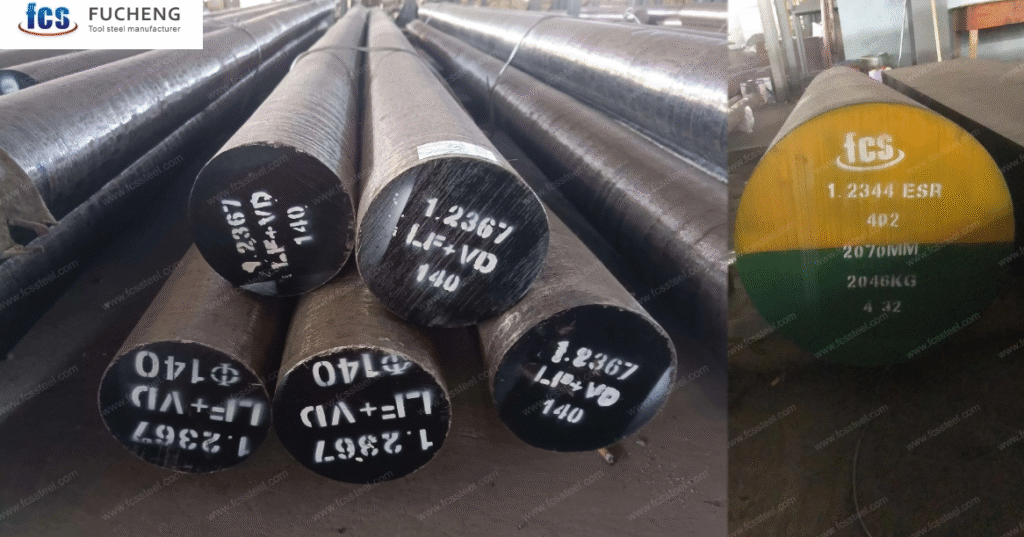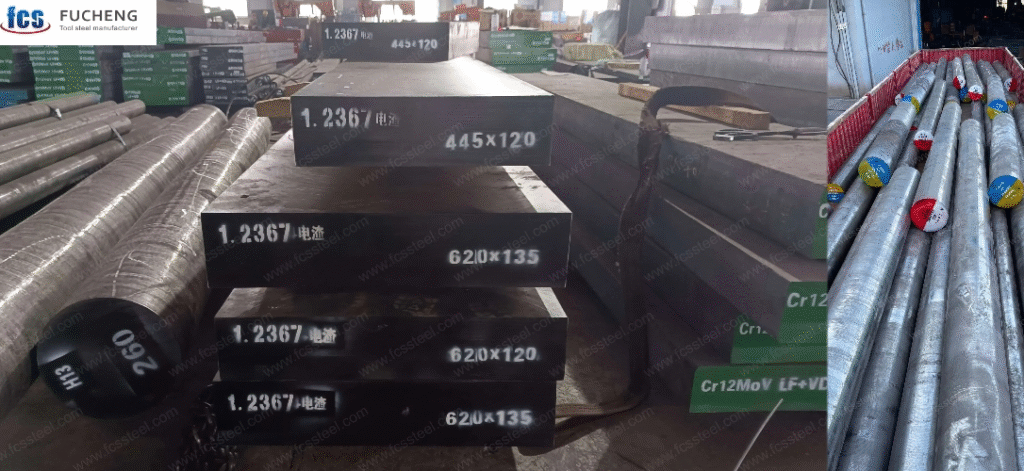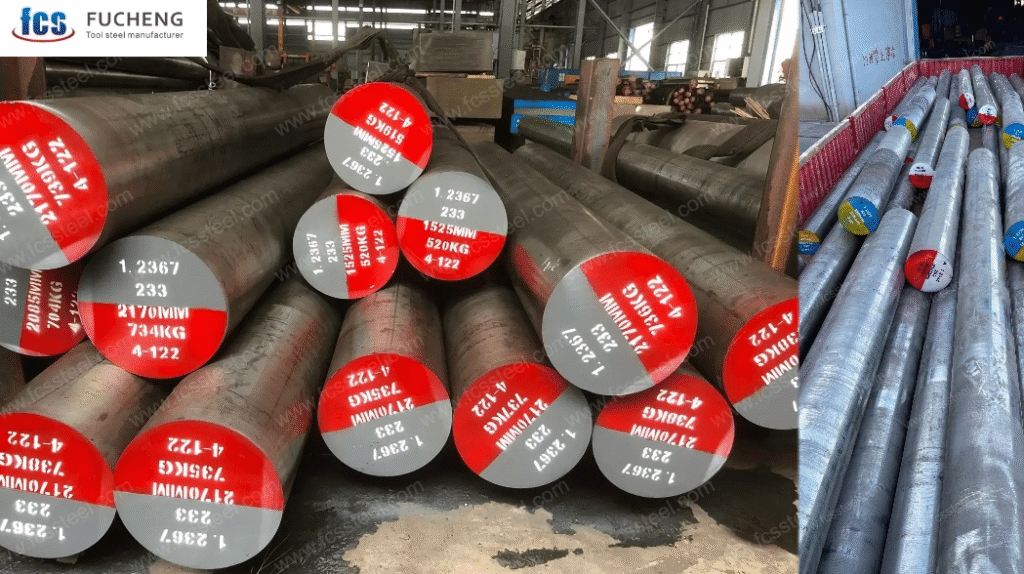Gothenburg, Sweden’s second-largest city, is widely recognized as a hub for automotive manufacturing, toolmaking, and precision engineering. In the heart of this industrial ecosystem, tool steel selection plays a decisive role in production efficiency, tool longevity, and overall manufacturing costs.
Two of the most frequently debated hot-work steels are 1.2367 and 1.2344 (H13 equivalent). Both are part of the DIN (Deutsche Industrie Norm) hot-work steel family, yet they serve slightly different purposes. For press tool makers in Gothenburg, the choice between them often comes down to heat-fatigue resistance vs. crack resistance.
This article will provide a comprehensive comparison of 1.2367 vs. 1.2344, covering:
- Chemical composition and classification
- Heat-fatigue performance
- Resistance to quench cracking
- Dimensional stability in large press tools
- Typical applications in Swedish toolmaking
- Economic and supply considerations
By the end, readers will understand why toolmakers in Gothenburg tend to prefer one grade over the other depending on the press tool design and production environment.

1. Steel Overview
1.2367 Hot-Work Tool Steel
- Composition: ~0.38% C, 5.0% Cr, 3.0% Mo, 0.4% V.
- Key Features:
- High molybdenum content significantly improves resistance to heat fatigue and softening.
- Excellent toughness compared to traditional H13 steels.
- Widely used in forging dies, extrusion tools, and press tooling under severe thermal conditions.
1.2344 Hot-Work Tool Steel (H13 Equivalent)
- Composition: ~0.38% C, 5.2% Cr, 1.3% Mo, 1.0% V.
- Key Features:
- Balanced combination of hot hardness, toughness, and machinability.
- Standard choice for many hot-work applications worldwide.
- Ideal for die-casting molds, extrusion dies, and general press tooling.
Key Difference in Chemistry:
- 1.2367 has nearly double the molybdenum content compared to 1.2344, which enhances thermal fatigue resistance and softening resistance under prolonged high-temperature cycles.
2. Heat-Fatigue Resistance
Heat fatigue is one of the most critical failure mechanisms in press tools used for hot forming and stamping.
- 1.2367:
- Superior resistance due to higher molybdenum.
- Demonstrates longer life in repeated heating/cooling cycles.
- Field data suggests 20–30% longer service life compared to standard 1.2344 in aluminum hot forming.
- 1.2344:
- Reliable and widely used, but more prone to surface checking after extended cycles.
- Performs best in medium-heat press applications rather than extreme heat fatigue environments.
Comparison: For automotive stamping and forming lines in Gothenburg, where press tools are subjected to high-temperature loads, 1.2367 generally outperforms 1.2344 in heat-fatigue life.
3. Quench Crack Resistance

Quenching after heat treatment can lead to cracking if the steel lacks toughness.
- 1.2367:
- Excellent quench crack resistance thanks to its alloy balance.
- Particularly valuable in large-section dies and tools common in Sweden’s automotive and heavy machinery industries.
- 1.2344:
- Moderate resistance, but large or complex geometries face higher risks.
- Careful control of quenching speed and temperature required to minimize cracking.
Comparison:
- For large press tools requiring thick cross-sections, 1.2367 is safer against quench cracks.
- For smaller tools or general-purpose dies, 1.2344 remains sufficient.
4. Dimensional Stability
Press tools in Gothenburg’s manufacturing lines often require tight tolerances and long-term shape accuracy.
- 1.2367:
- High molybdenum improves resistance to distortion and deformation.
- Maintains stability over prolonged thermal cycling.
- 1.2344:
- Good dimensional stability but slightly more prone to heat checking and micro-cracks under severe cycling.
Example Data:
Research from Uddeholm (a Swedish tool steel producer) shows that 1.2367 maintains hardness above 45 HRC after 1000 heating/cooling cycles, while 1.2344 begins to drop hardness after ~700 cycles.
5. Typical Applications in Gothenburg’s Toolmaking

1.2367 Applications
- Hot forging dies for automotive components.
- Large press tools requiring long service cycles.
- High-performance extrusion tooling.
- Tools exposed to severe heat fatigue environments.
1.2344 Applications
- Standard die-casting molds.
- General hot press tools.
- Extrusion dies for medium workloads.
- Applications where machinability and cost efficiency outweigh extreme fatigue resistance.
6. Economic and Supply Considerations in Sweden
- 1.2344:
- More widely available across European distributors.
- Lower initial material cost, making it attractive for general-purpose tooling.
- Faster lead times in procurement.
- 1.2367:
- Higher alloying content leads to higher production costs.
- Less common, but major suppliers in Scandinavia (Uddeholm, ASSAB) stock it.
- Longer tool life may offset higher initial costs, especially in high-volume press operations.
7. Selection Guidelines for Gothenburg Press Tool Makers

- Choose 1.2367 if:
- Tools are subjected to extreme heat fatigue cycles.
- Large dies or thick-section tools are being manufactured.
- Quench crack resistance is a high priority.
- Choose 1.2344 if:
- Tools are for medium-heat press applications.
- Cost and availability are the main considerations.
- Machinability and standardization are valued.
Conclusion
For press tool makers in Gothenburg, Sweden, the choice between 1.2367 and 1.2344 reflects a balance between performance and practicality.
- 1.2367 is preferred in high-demand applications requiring maximum heat fatigue resistance, dimensional stability, and crack resistance. It is especially valuable for large dies in the automotive and heavy industry sectors.
- 1.2344 remains the workhorse hot-work steel, chosen for its cost efficiency, availability, and versatility in less demanding press applications.
Ultimately, the decision depends on production volume, tool size, and operating environment. Many Gothenburg toolmakers adopt a dual strategy: using 1.2344 for standard tools and 1.2367 for premium, long-life applications where extended uptime and reliability justify the higher material investment.
